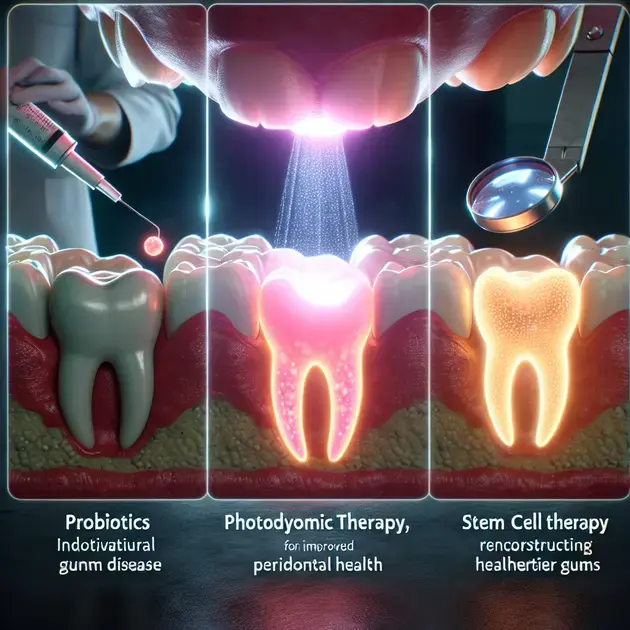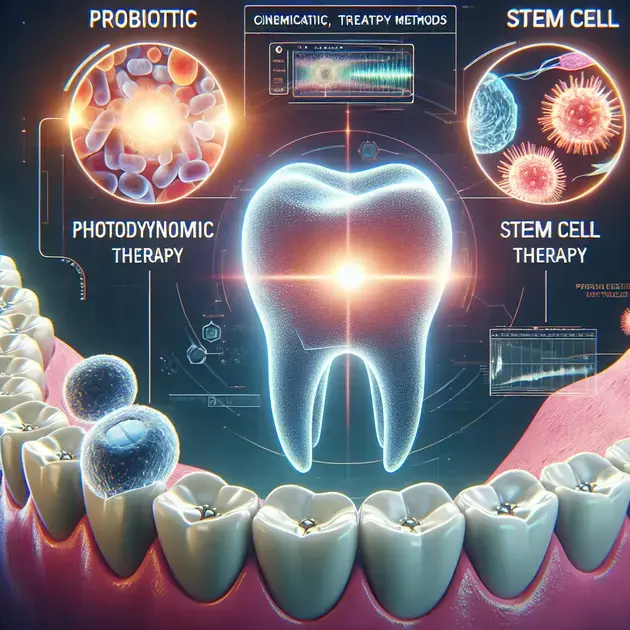When it comes to treating periodontitis, understanding the different options available is crucial for successful management. In this post, we will delve into one of the essential treatment methods: medication. Medication plays a key role in controlling the progression of periodontal disease and supporting overall oral health.
With advancements in dental research and technology, there are now various medications specifically designed to target the bacteria responsible for periodontitis. These medications can be prescribed in different forms, such as mouth rinses, gels, or even systemic antibiotics, to address the specific needs of each patient. By exploring the nuances of medication in periodontal treatment, we can gain a deeper insight into how these options work and their effectiveness in combating periodontitis.

Understanding Periodontitis Medication
Periodontitis medication plays a crucial role in managing and treating gum disease. Understanding the different types of medication available can help individuals make informed decisions about their oral health. One popular form of medication for periodontitis is the use of antimicrobial mouthwashes, such as chlorhexidine. These mouthwashes help reduce the bacterial load in the mouth, promoting healing of the gums.
Another form of medication for periodontitis is antibiotics. Antibiotics can be prescribed in pill form or as a gel that is applied directly to the gum pockets. Common antibiotics used for treating periodontitis include doxycycline and metronidazole. These medications help eliminate the bacteria causing the infection and reduce inflammation in the gums.
To effectively manage periodontitis with medication, it is essential to follow the prescribed treatment plan provided by a dental professional. Regular dental check-ups are necessary to monitor the progress of the treatment and make any necessary adjustments. Additionally, maintaining good oral hygiene practices, such as brushing and flossing regularly, can enhance the effectiveness of medication in controlling periodontal disease.
One useful resource for learning more about periodontitis medication is the website of the American Academy of Periodontology. They provide comprehensive information on the various medications available for treating gum disease, including their benefits and potential side effects. By visiting their site, individuals can educate themselves on the importance of medication in managing periodontitis.
Different Forms of Medication for Periodontitis
There are several different forms of medication that can be used to treat periodontitis, each with its unique benefits and applications. One common form of medication is the use of oral antibiotics, which can help eliminate the bacteria causing the gum infection. These antibiotics may be prescribed in pill form or as a mouth rinse, depending on the severity of the periodontitis.
Another form of medication for periodontitis is antimicrobial agents, such as chlorhexidine gluconate. These agents are often used in mouthwashes or gels to reduce the number of bacteria in the mouth and prevent further progression of the disease. Applying these agents directly to the gums can help target the infection more effectively.
In some cases, surgical intervention may be necessary to treat advanced periodontitis. Surgical procedures, such as flap surgery or tissue grafts, may be combined with antibiotic therapy to achieve optimal results. Understanding the different forms of medication available for periodontitis can help individuals work with their dental professionals to develop a comprehensive treatment plan.
Websites like the Centers for Disease Control and Prevention (CDC) offer valuable information on the various medications used to treat periodontitis. By visiting the CDC website, individuals can access resources that explain the different forms of medication available, their appropriate uses, and potential side effects. This can help individuals make informed decisions about their oral health care.
Effectiveness of Medication in Treating Periodontal Disease
The effectiveness of medication in treating periodontal disease can vary depending on the severity of the condition and how well the individual follows the prescribed treatment plan. In cases of mild to moderate periodontitis, medication combined with good oral hygiene practices can lead to significant improvement in gum health.
Studies have shown that certain medications, such as antibiotics and antimicrobial mouthwashes, can help reduce inflammation, control bacterial growth, and promote healing of the gums. When used as part of a comprehensive treatment approach that includes regular dental visits and professional cleanings, medication can be highly effective in managing periodontal disease.
It is important for individuals to adhere to the prescribed dosage and frequency of medication to achieve optimal results. Skipping doses or discontinuing medication prematurely can hinder the effectiveness of the treatment and lead to persistent gum inflammation. By following the guidance of a dental professional and maintaining consistent oral care habits, individuals can maximize the benefits of medication in treating periodontal disease.
For up-to-date information on the effectiveness of medication in treating periodontal disease, individuals can consult reputable sources such as the National Institute of Dental and Craniofacial Research (NIDCR) website. The NIDCR provides research-based insights into the use of medications for periodontal disease and highlights the importance of personalized treatment plans to achieve successful outcomes.

Medication Management for Periodontitis Patients
One of the key aspects of managing periodontitis in patients is through effective medication management. By utilizing the right medications, healthcare providers can help control the progression of gum disease and promote periodontal health. One common medication used for periodontitis patients is antibiotics, which can help reduce the bacterial infection causing gum disease. These antibiotics are often prescribed in conjunction with other treatments like scaling and root planing to provide comprehensive care.
In addition to antibiotics, antimicrobial mouthwashes can also play a vital role in medication management for periodontitis patients. These mouthwashes can help reduce the levels of bacteria in the mouth, leading to healthier gums and reduced inflammation. It’s essential for patients to follow their healthcare provider’s instructions carefully when using these medications to ensure optimal results.
Another approach to medication management for periodontitis patients is the use of anti-inflammatory drugs. These medications can help reduce the inflammation associated with gum disease, providing relief for patients and supporting the healing process. By incorporating anti-inflammatory drugs into the treatment plan, healthcare providers can address both the symptoms and underlying causes of periodontitis effectively.
Overall, medication management is an integral part of treating periodontitis in patients. By utilizing antibiotics, antimicrobial mouthwashes, and anti-inflammatory drugs, healthcare providers can create a comprehensive treatment plan to promote gum health and control the progression of gum disease.
Novel Approaches to Gum Disease Treatment
In recent years, several novel approaches to gum disease treatment have emerged, offering new possibilities for improving periodontal health. One innovative approach is the use of probiotics to restore the balance of oral bacteria and promote a healthy oral environment. Probiotics can help inhibit the growth of harmful bacteria that contribute to gum disease, leading to improved gum health and reduced inflammation.
Another novel approach to gum disease treatment is the use of photodynamic therapy. This treatment involves the application of a photosensitive agent to the gums, which is then activated with a special light source. The activated agent can help target and eliminate bacteria associated with gum disease, promoting healing and reducing the risk of recurrence.
Additionally, stem cell therapy has shown promise as a novel approach to gum disease treatment. By utilizing the regenerative properties of stem cells, healthcare providers can promote tissue repair and regeneration in the gums, leading to improved periodontal health. This personalized approach to treatment holds great potential for enhancing the effectiveness of gum disease management.
Overall, these novel approaches offer exciting possibilities for enhancing gum disease treatment and promoting better periodontal health. By exploring innovative solutions like probiotics, photodynamic therapy, and stem cell therapy, healthcare providers can offer patients new options for managing gum disease effectively.
Maximizing Treatment Efficacy for Periodontal Health
Achieving optimal treatment efficacy is crucial for promoting periodontal health and managing gum disease effectively. One essential aspect of maximizing treatment efficacy is through personalized treatment plans tailored to each patient’s unique needs. By considering factors like the severity of gum disease, overall oral health, and medical history, healthcare providers can create targeted treatment strategies to address specific issues and promote healing.
Regular follow-up appointments and monitoring are also key to maximizing treatment efficacy for periodontal health. By tracking the progress of treatment, healthcare providers can make necessary adjustments and interventions to ensure the best possible outcomes. This proactive approach can help prevent complications, address any emerging issues, and support long-term gum health.
Incorporating patient education and support into the treatment plan is another crucial element in maximizing treatment efficacy. By empowering patients with knowledge about gum disease, oral hygiene practices, and treatment options, healthcare providers can enhance compliance and engagement, leading to better treatment outcomes. Educated patients are more likely to take an active role in their oral health and follow through with recommended treatments.
Overall, maximizing treatment efficacy for periodontal health requires a comprehensive and personalized approach. By individualizing treatment plans, promoting regular monitoring, and providing patient education and support, healthcare providers can optimize the effectiveness of gum disease management and promote long-term periodontal health.
Conclusion
Effective medication management plays a crucial role in controlling the progression of periodontitis and promoting periodontal health. By utilizing antibiotics, antimicrobial mouthwashes, and anti-inflammatory drugs, healthcare providers can create comprehensive treatment plans to address the bacterial infection and inflammation associated with gum disease. This integrated approach not only helps in managing the symptoms but also targets the underlying causes of periodontitis effectively. It is essential for patients to closely follow their healthcare provider’s instructions when using these medications to ensure optimal results and overall gum health.
In recent years, novel approaches to gum disease treatment have introduced exciting possibilities for enhancing periodontal health. From utilizing probiotics to restore oral bacterial balance to employing photodynamic therapy for targeted bacterial elimination and stem cell therapy for tissue repair, innovative solutions are revolutionizing gum disease management. These novel approaches offer patients new options for effectively managing gum disease and promoting better periodontal health, showcasing the potential for personalized and effective treatment strategies tailored to individual needs.
Maximizing treatment efficacy for periodontal health requires a personalized and comprehensive approach that goes beyond symptom management. Through tailored treatment plans, regular monitoring, and patient education and support, healthcare providers can optimize the effectiveness of gum disease management. By considering factors like the severity of gum disease and incorporating patient feedback, providers can address specific issues, prevent complications, and promote long-term gum health. This proactive and educational approach empowers patients to take an active role in their oral health and ensures better treatment outcomes in the long run.



